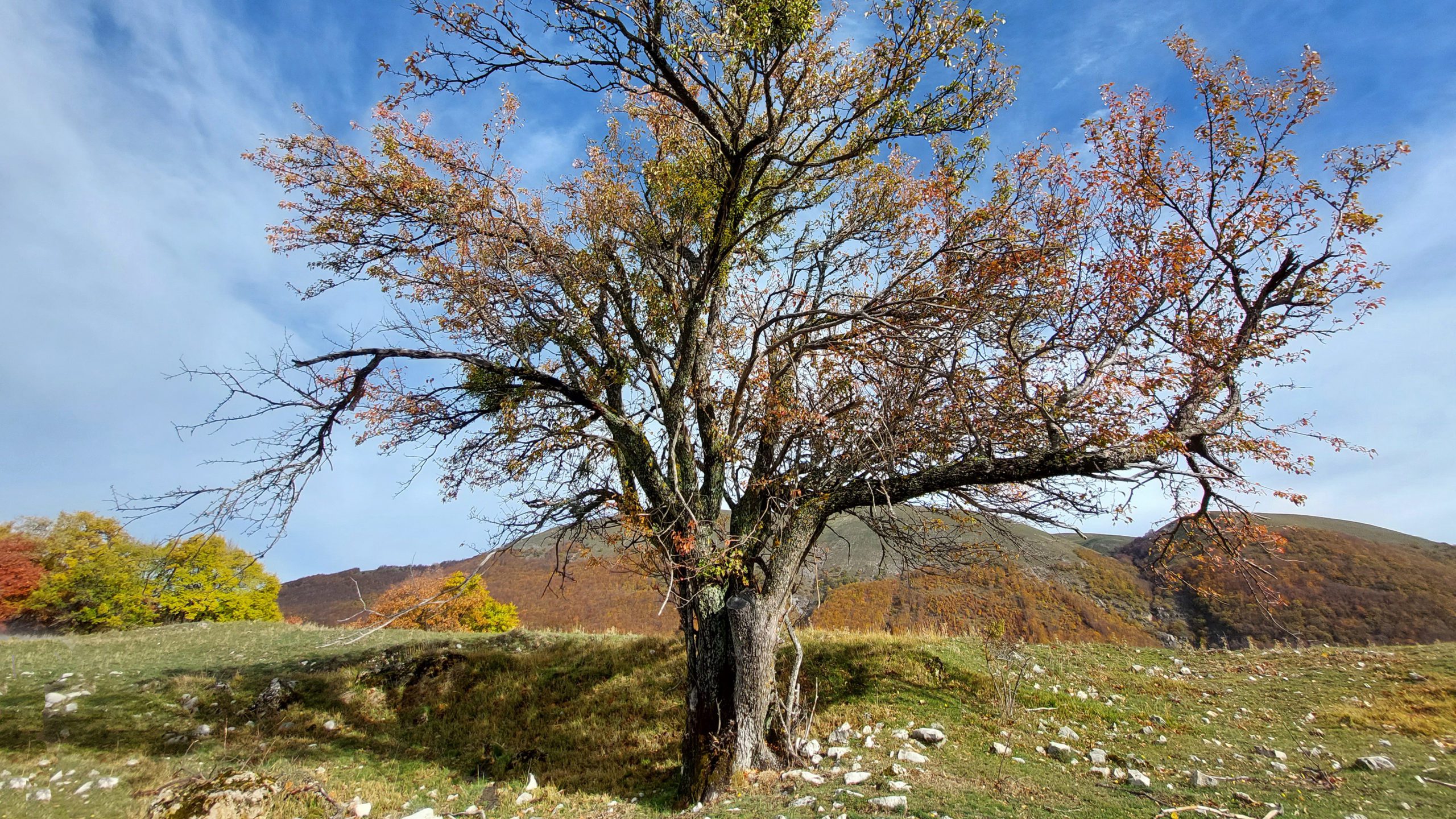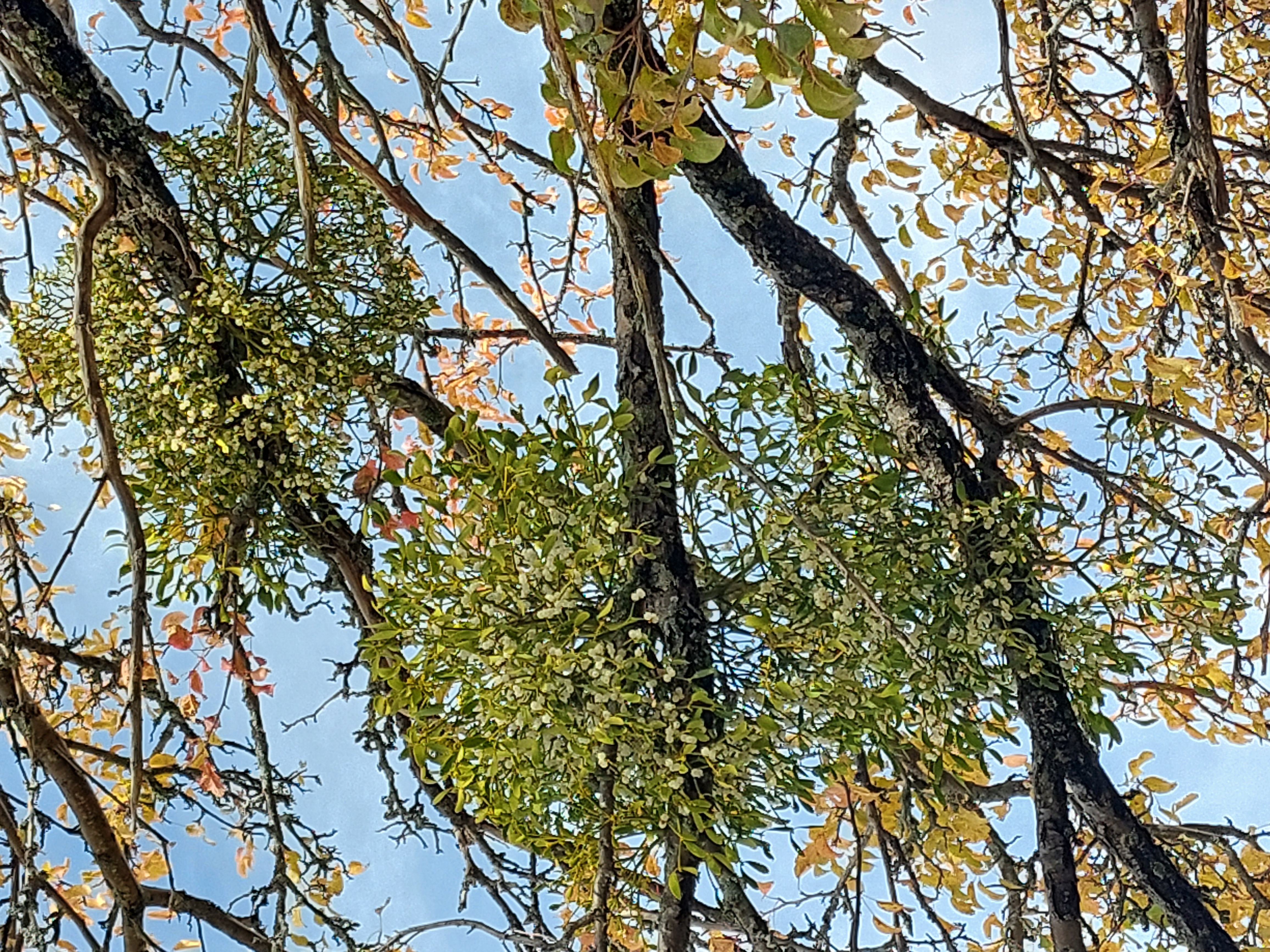The wild apple (Malus sylvestris) is a distinct species from the domestic apple (Malus domestica) cultivated for the common apple fruits seen on the market. It is widespread in the mesophilous deciduous woods of the whole peninsula, including the islands, although in Umbria it is not very common, some specimens are occasionally found in woods and shrubs below the beech belt. Its fruit is unappetizing for humans, due to its sour taste of unripe fruit and to its small size, but it is highly appreciated by wild animals. Flowering is in April-May, while fruit ripening occurs in early autumn, ensuring food for many mammals, who are preparing to face the winter season. On the branches of this centuries-old specimen it is possible to notice mistletoe (Viscum album), a parasitic plant that absorbs water and nutrients from the host. The seeds, transported by birds, settle in the fissures on the bark of trees and shrubs, where they germinate and form the typical bushes.




